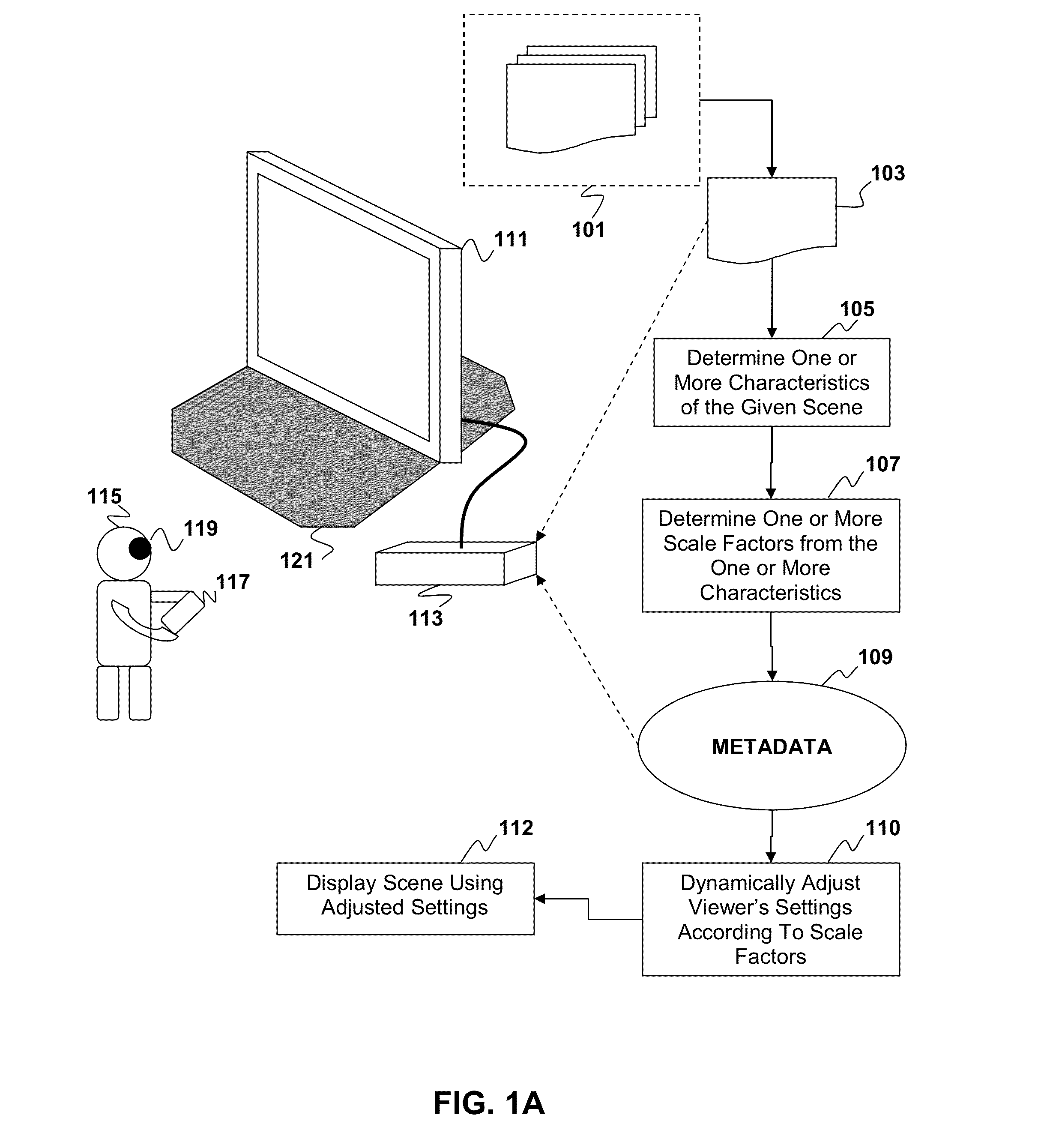Scaling pixel depth values of user-controlled virtual object in three-dimensional scene
a virtual object and depth value technology, applied in the field of scaling pixel depth values of user-controlled virtual objects in three-dimensional scenes, can solve the problem that one set of re-projection parameters may not be ideal for every scen
- Summary
- Abstract
- Description
- Claims
- Application Information
AI Technical Summary
Benefits of technology
Problems solved by technology
Method used
Image
Examples
Embodiment Construction
[0028]For any viewer of a projected three-dimensional image, several characteristics / cues govern their perception of depth. Each viewer's ability to perceive depth in a three-dimensional projection is unique to their own pair of eyes. Certain cues can provide certain depth characteristics associated with a given scene to a viewer. By way of example, and not by way of limitation, these binocular cues may include stereopsis, convergence, and shadow stereopsis.
[0029]Stereopsis refers to a viewer's ability to judge depth by processing information derived from the different projection of objects onto each retina. By using two images of the same scene obtained from slightly different angles, it is possible to triangulate the distance to an object with a high degree of accuracy. If an object is far away, the disparity of that image falling on both retinas will be small. If the object is close or near, the disparity will be large. By adjusting the angular difference between the different pr...
PUM
 Login to View More
Login to View More Abstract
Description
Claims
Application Information
 Login to View More
Login to View More - R&D
- Intellectual Property
- Life Sciences
- Materials
- Tech Scout
- Unparalleled Data Quality
- Higher Quality Content
- 60% Fewer Hallucinations
Browse by: Latest US Patents, China's latest patents, Technical Efficacy Thesaurus, Application Domain, Technology Topic, Popular Technical Reports.
© 2025 PatSnap. All rights reserved.Legal|Privacy policy|Modern Slavery Act Transparency Statement|Sitemap|About US| Contact US: help@patsnap.com



